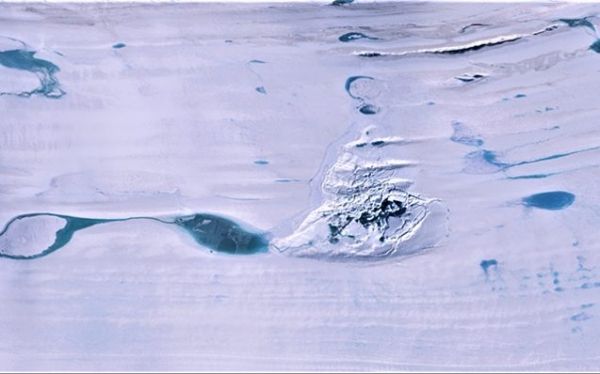A global team of scientists has observed the sudden drainage of a large, deep, ice-covered lake within an Antarctic ice shelf—a rare phenomenon that could be interpreted as an ominous sign for the future survival of the ice sheet, and potential global sea-level rise.
The event, chronicled in a study just published in the journal Geophysical Research Letters, occurred during the 2019 Antarctic winter on the Amery Ice Shelf in East Antarctica. The scientists estimate that 600 million to 750 million cubic meters of water, about twice the volume of California’s San Diego Bay, were suddenly lost to the ocean when the lake drained from the bottom of the 1,400-meter (4,590 feet) -thick floating ice shelf.
The study’s authors used radar images from a satellite to pin down the event’s timing to within a week or less in June. After the unnamed lake drained, in its place was a crater-like depression in the ice surface, covering about 11 square kilometers (4.25 square miles). The depression, known as an ice doline, contained the fractured remains of the ice cover.
The event was also captured by a laser instrument on NASA’s ICESat-2 satellite, revealing the vertical scale of the disruption. The ice surface fell as much as 80 meters (260 feet) into the doline cavity. The loss of the water load also made the floating ice shelf lighter, and ocean pressure caused it to flex upwards, with the lake’s immediate surroundings rising as much as 36 meters (118 feet).
Read more at Earth Institute at Columbia University
Image: At center, the fractured ice of a doline on the Amery Ice Shelf, where a large subsurface lake drained through the bottom. Surface melt-water ponds surround the feature. (Credit: NASA)


